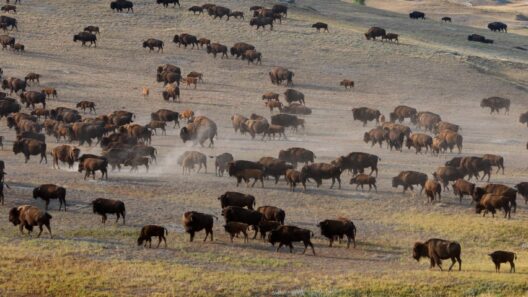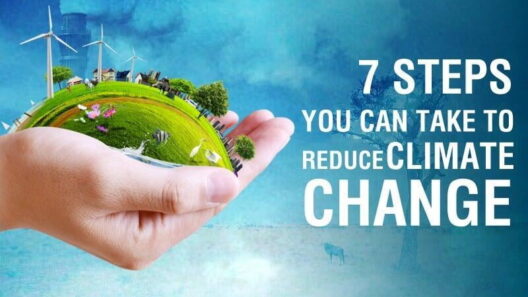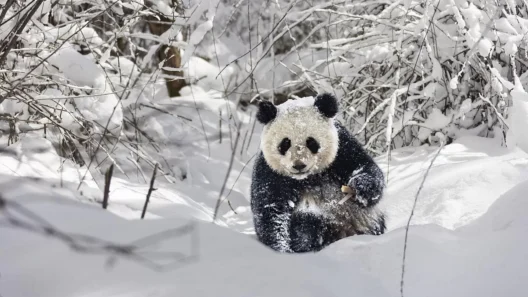Deforestation is akin to peeling the bark off a tree; it exposes the delicate wood beneath and leaves it vulnerable to decay. The destruction of forests is not merely a local or regional concern; it is a formidable assault on the global climate system. As the lungs of our planet, forests play an essential role in regulating the atmosphere, and their disappearance has cascading effects that reverberate throughout the biosphere.
To understand why deforestation contributes to climate change, one must first grasp the intricate relationship between trees and atmospheric balance. Trees absorb carbon dioxide (CO2), one of the primary greenhouse gases responsible for the greenhouse effect. This process occurs through photosynthesis, where trees convert CO2 into oxygen and biomass. When forests are cut down or burned, the stored carbon is released back into the atmosphere, further exacerbating global warming. It is as if the planet’s protective shield against solar radiation is continuously eroded, creating an increasingly hostile environment.
In the grand tapestry of ecological interrelationships, forests serve as a crucial intermediary. They regulate local and global climates by influencing rainfall patterns and temperature. By intercepting the sun’s rays, trees moderate the Earth’s surface temperature. Without forests, the land becomes a vast expanse of heat-absorbing surfaces, dramatically increasing local temperatures. This phenomenon is known as the urban heat island effect, but it applies equally to deforested areas. The elimination of forest canopies disrupts the hydrological cycle; trees release moisture back into the atmosphere through transpiration. The repercussions are dire: reduced rainfall, prolonged droughts, and altered growing seasons affect not only the flora and fauna but also human agricultural practices.
Furthermore, deforestation often leads to soil erosion—a poignant reminder that when the roots of trees are severed, the earth beneath is left unanchored. Soil, teeming with microorganisms, plays a pivotal role in carbon storage. When trees are removed, not only is carbon released, but the soil’s ability to sequester carbon diminishes. This dual effect amplifies the urgency of addressing deforestation not just as a standalone issue but as an integral part of the climate crisis.
The scale of deforestation is staggering. The World Resources Institute reports that approximately 10 million hectares of forest are lost each year, an area roughly the size of Iceland. The driving forces behind this phenomenon—agriculture, logging, urban expansion, and mining—are often at odds with conservation efforts. This conflict highlights a critical conundrum: how to balance human demands for land and resources with the imperative to preserve the forests that act as planetary guardians.
Moreover, the interconnectedness of global markets exacerbates deforestation in less developed countries. The demand for palm oil, soy, and beef has catalyzed the clearing of vast tracts of rainforest, particularly in biodiverse hotspots like the Amazon and Southeast Asia. The insatiable appetite for these commodities, popularized in global markets, contributes to an economic model that prioritizes short-term gains over long-term sustainability. It is this relentless pursuit of growth that often leads to the tragic irony: the very resources we depend on are being sacrificed at the altar of economic expansion.
Nevertheless, the plight of deforestation and climate change is not insurmountable. Solutions abound, albeit requiring significant shifts in policy, consumption, and cultural attitudes. Reforestation and afforestation initiatives are pivotal strategies. Planting native tree species not only restores habitats but also revitalizes carbon sequestration capabilities. These strategies can be likened to stitching the fabric of nature back together, albeit with careful consideration and planning to ensure ecological integrity.
Additionally, sustainable forestry practices offer a glimmer of hope, allowing for the harvesting of timber without irreparably damaging forest ecosystems. Agroforestry—a blend of agriculture and forestry—serves as a harmonious alternative, allowing for food production while preserving forest cover. The integration of trees into agricultural systems not only mitigates climate impacts but also enhances biodiversity and soil health.
Global initiatives such as REDD+ (Reducing Emissions from Deforestation and Forest Degradation) target financial incentives for developing countries to maintain their forest cover. These efforts pivot the focus from destructive practices to conservation, recognizing the invaluable services that forests provide. Yet, the success of such programs hinges on equitable participation and the respect of Indigenous knowledge, often deeply rooted in sustainable land management practices.
Public awareness and individual action cannot be underestimated. Consumer choices, such as reducing meat intake, supporting sustainably sourced timber, and advocating for policies aimed at protecting forests, can drive systemic change. When people unite in solidarity for the forest, they become the collective voice advocating for a planet that flourishes rather than falters.
In conclusion, deforestation is not merely an environmental concern; it is a profound contributor to climate change, undermining the delicate balance of our planet. Each tree lost is a chapter torn from the Earth’s story—a story that must encompass resilience, sustainability, and hope. The path forward lies in recognizing the interconnectedness of our actions, the forests, and the climate they help sustain. Only through concerted effort can we hope to restore our planet’s lungs and, consequently, our own future.






